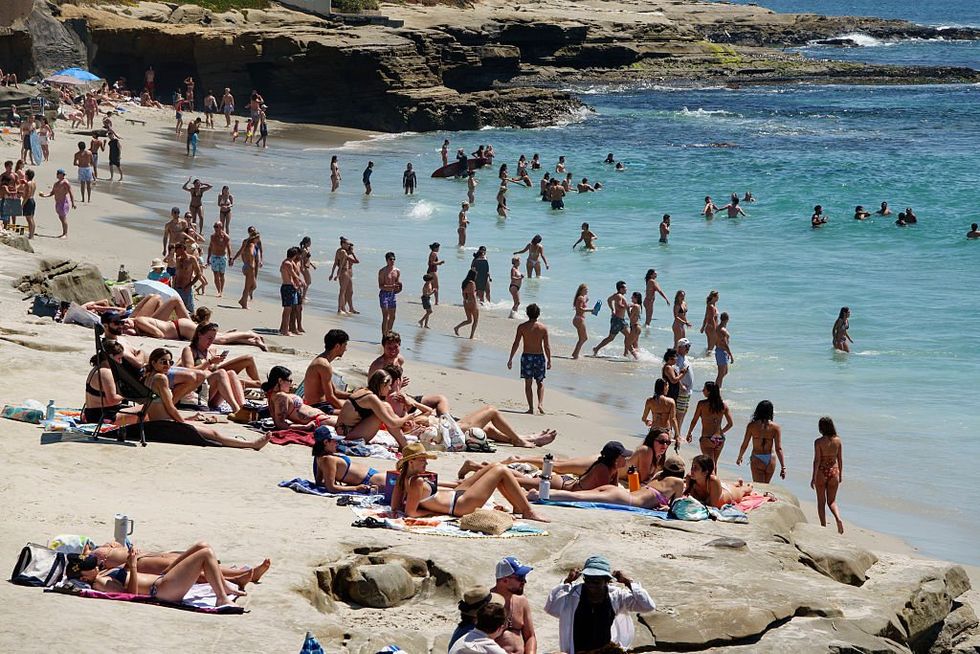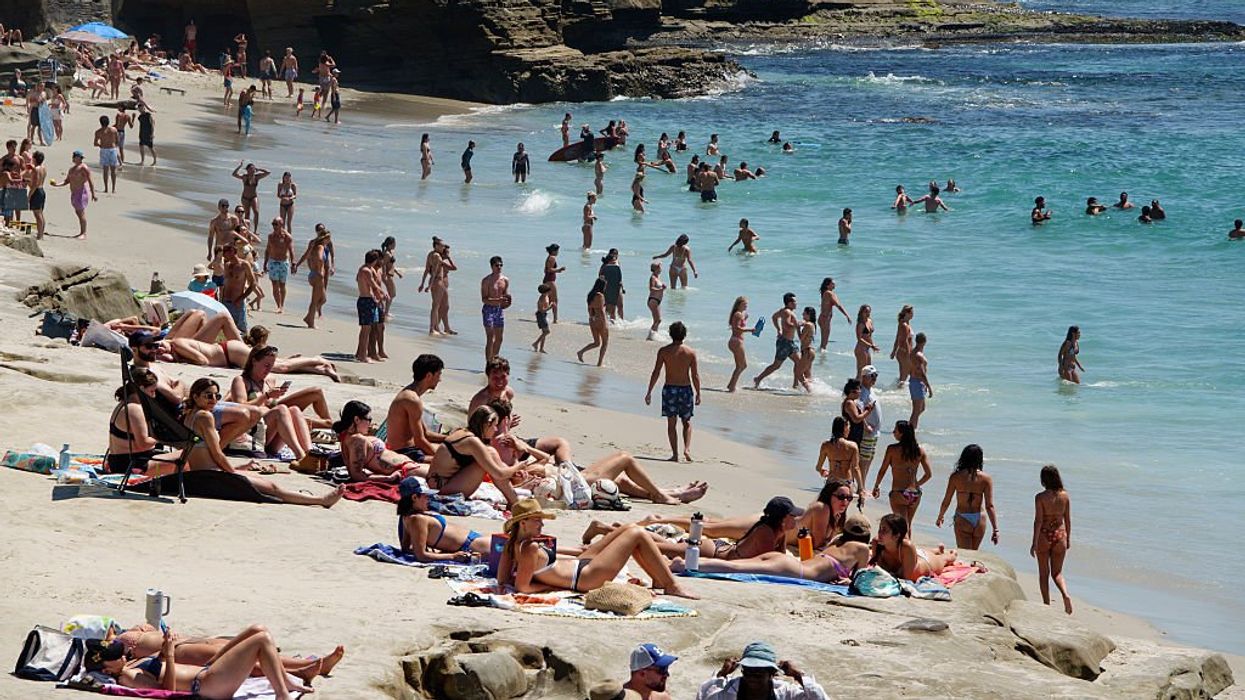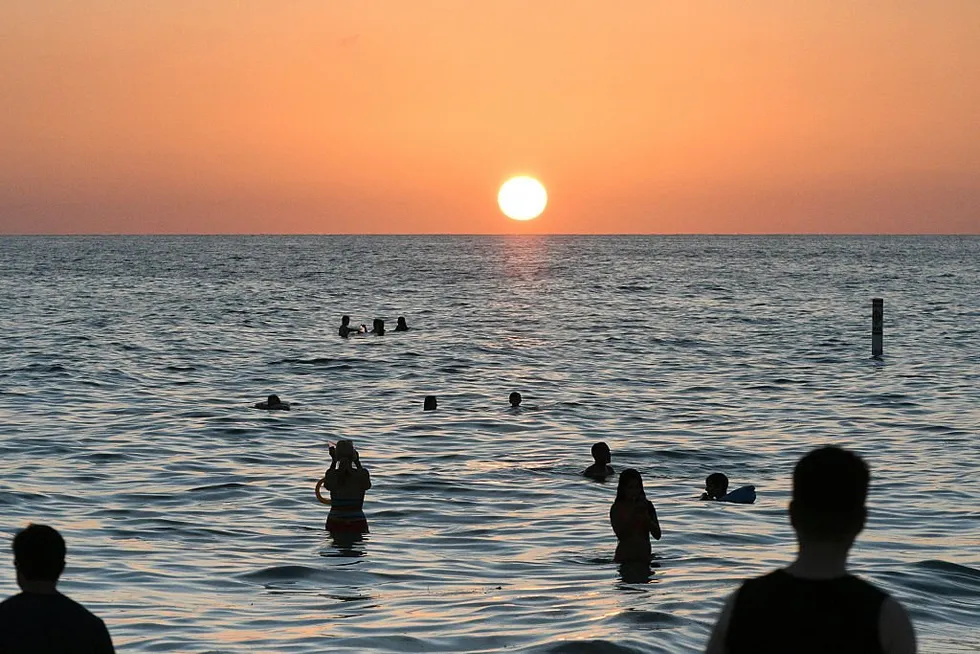Headed to the beach? Good chance it's crappy.


Boats, kelp, and driftwood aren't the only things floating in America's coastal waters.
Live Your Best Retirement
Fun • Funds • Fitness • Freedom
According to a report published Monday by the Environment America Research and Policy Center, 61% of America's beaches experienced at least one day last year when indicators of fecal contamination were in excess of the U.S. Environmental Protection Agency's "Beach Action Value" — meaning they were potentially unsafe.
Testers routinely check waters for certain types of bacteria commonly found in the intestinal tracts of humans and other warm-blooded animals that indicate fecal contamination, namely enterococcus and E. coli, the latter of which represents around 97% of all of the coliform bacteria in human feces.
When assessing beach safety for enterococcus, the beach action value is 60 colony-forming units per 100 milliliters for marine and fresh water. For E. coli, the beach action value is 190 cfu/100 milliliters.
In Illinois, Mississippi, and Pennsylvania, for instance, 100% of the beaches failed the test at least once last year.
Swimming in fecal-contaminated waters, particularly those teeming with such bacteria, can cause various health conditions including diarrhea, vomiting, respiratory illness, and various kinds of infection.
Utilizing the Water Quality Portal, a U.S. Geological Survey and Environmental Protection Agency-backed service, researchers analyzed 2024 fecal contamination testing data for all beaches listed under the BEACH Act in the U.S. and Puerto Rico. Data for some states was obtained separately.
 Photo by Ronaldo Silva/NurPhoto via Getty Images
Photo by Ronaldo Silva/NurPhoto via Getty Images
Roughly 14% — 452 beaches — had potentially unsafe levels of fecal contamination on at least 25% of the days testing took place, said the report.
Some regions were worse off than others.
The report indicated that 84% of the beaches along the Gulf Coast were found to be potentially unsafe last year. Seventy-nine percent of West Coast beaches; 71% of beaches along the Great Lakes; 54% of East Coast beaches; and 10% of the beaches in Alaska and Hawaii had at least one dirty day of concern last year.
The issue appeared to be fairly universal in certain states.
In Illinois, Mississippi, and Pennsylvania, for instance, 100% of the beaches failed the test at least once last year. The percentages of beaches affected in Alabama, Texas, and Ohio weren't much better — 96%, 94%, and 92%, respectively.
There were reportedly over 7,563 health warnings or closures at American beaches last year.
According to the EPA, fecal contamination at swimming beaches can be caused by a high number of swimmers; excrement dumped by recreational boaters; sewer discharge from combined sewers and malfunctioning sewage treatment plants; poorly maintained septic systems; and rainwater runoff carrying non-human excrement to sea.
A 2018 study published in the peer-reviewed medical journal Environmental Health indicated that "an estimated 4 billion surface water recreation events occur annually, resulting in an estimated 90 million illnesses nationwide and costs of $2.2-$3.7 billion annually (central 90% of values)."
Apparently the epidemiological data signals the risk of acute gastrointestinal illness attributable to both swimming and fishing is 15 cases per 1,000 recreators.
The EPA told Congress last year that at least $630 billion will be needed over the next two decades to protect America's bodies of water by taking such steps as modernizing publicly owned wastewater treatment works, stormwater infrastructure, and decentralized wastewater treatment systems.
Like Blaze News? Bypass the censors, sign up for our newsletters, and get stories like this direct to your inbox. Sign up here!
Originally Published at Daily Wire, Daily Signal, or The Blaze
What's Your Reaction?
 Like
0
Like
0
 Dislike
0
Dislike
0
 Love
0
Love
0
 Funny
0
Funny
0
 Angry
0
Angry
0
 Sad
0
Sad
0
 Wow
0
Wow
0











































































